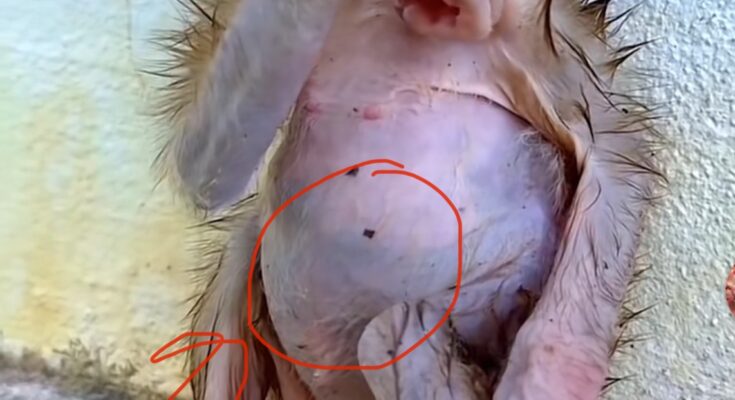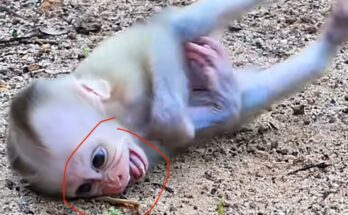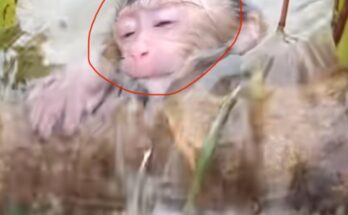In a heart-wrenching incident that underscores the delicate nature of wildlife, a baby monkey recently suffered an eye injury after coming into contact with soap. The young primate, estimated to be just a few months old, was being hand-reared in a rescue facility when the accident occurred. While the injury is not life-threatening, it highlights important concerns about hygiene practices, animal handling, and the broader challenges of caring for wild animals in human environments.
The Incident: A Moment of Care Gone Wrong
According to caretakers at the facility, the baby monkey was receiving its routine cleaning when a small amount of liquid soap accidentally got into its eye. Almost immediately, the monkey showed signs of distress—rubbing its face, squealing, and refusing food. A veterinary examination confirmed that the soap had caused irritation and mild corneal inflammation. Fortunately, quick intervention with saline washes and veterinary-grade eye drops prevented the injury from worsening.
While the baby monkey is now expected to make a full recovery, the situation serves as a reminder that even well-intentioned care can have unintended consequences, especially with vulnerable animals.
Understanding the Risks
Monkeys, like humans, have sensitive mucous membranes and eyes that can be easily damaged by chemical irritants. Many commercial soaps and cleaners contain fragrances, detergents, and preservatives that are harsh—even toxic—for animals. While soap is generally safe for human use, it’s not designed for the unique physiology of primates.
In this case, the soap was reportedly diluted, but even diluted cleaning products can cause eye burns, infections, or long-term vision problems if not properly managed.
Lessons in Animal Care
The incident has sparked internal reviews at the facility and conversations among wildlife caregivers worldwide about best practices in cleaning and hygiene. Some key lessons include:
-
Use animal-safe, non-toxic cleaning products: Specially formulated products exist for veterinary or wildlife use and should always be prioritized.
-
Training matters: Handlers must be trained not just in basic care, but also in understanding animal behavior and emergency response protocols.
-
Prevention is key: Eye injuries and other accidents are often preventable with simple measures like using damp cloths instead of soaps, especially for facial cleaning.
Ethical Considerations in Human-Wildlife Interaction
Beyond the immediate medical concern, the story of the baby monkey raises ethical questions about the increasing human involvement in the lives of wild animals. Whether in sanctuaries, rescue centers, or tourist attractions, these animals are often at risk of injury—not from predators, but from human error.
Rescue facilities play an important role in conservation, but they also have a duty to maintain the highest standards of care. This includes using appropriate products, minimizing stress, and constantly updating protocols based on veterinary science.
A Hopeful Recovery
The baby monkey is currently under observation, with daily eye treatments and a modified routine to reduce stress. Caregivers report that it has begun eating again and is showing signs of playfulness—a positive indicator of healing.
This small but meaningful incident reminds us that even minor lapses in care can have serious effects. It also highlights the resilience of animals and the importance of compassion backed by knowledge in all wildlife caregiving efforts.



